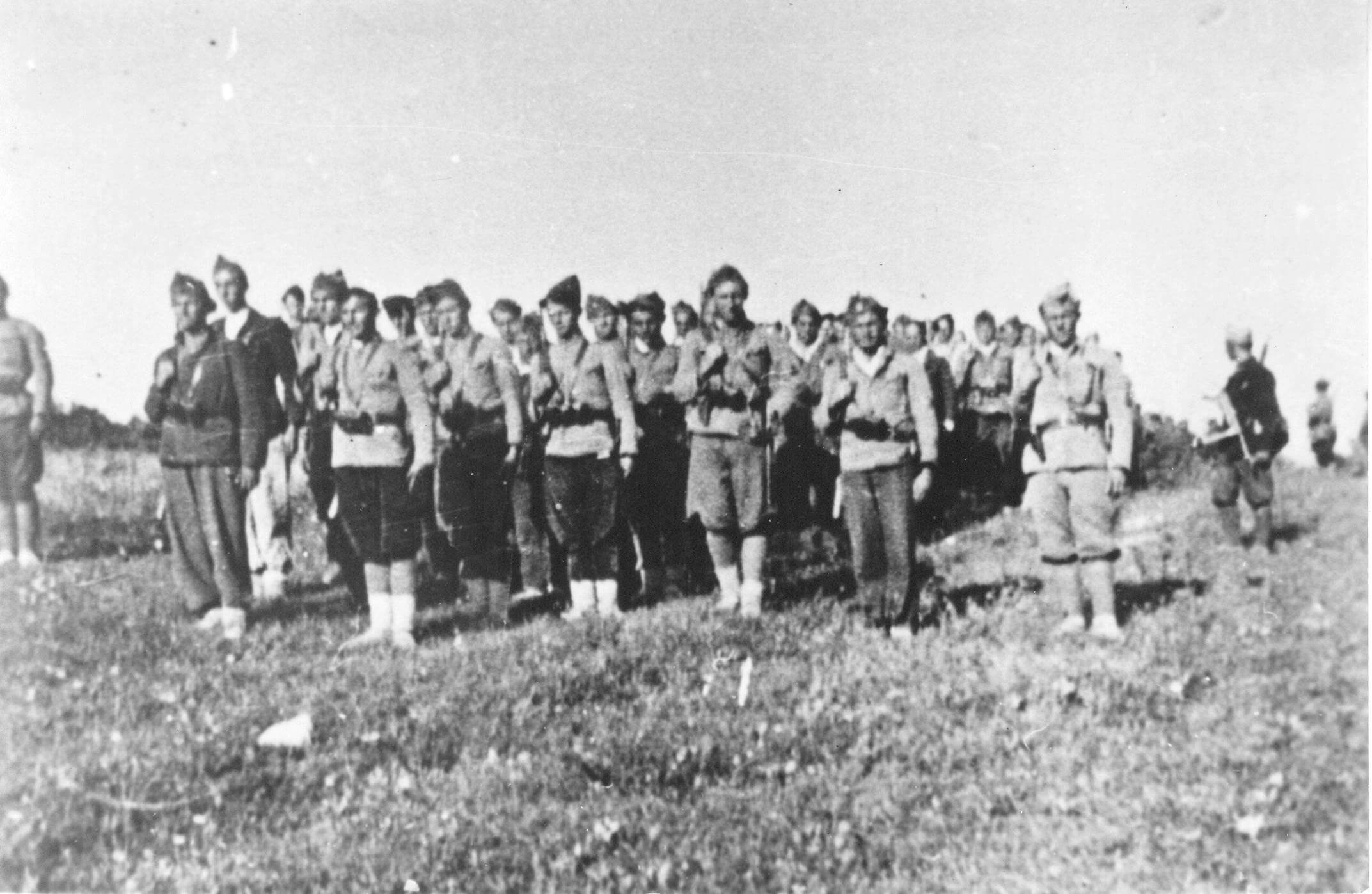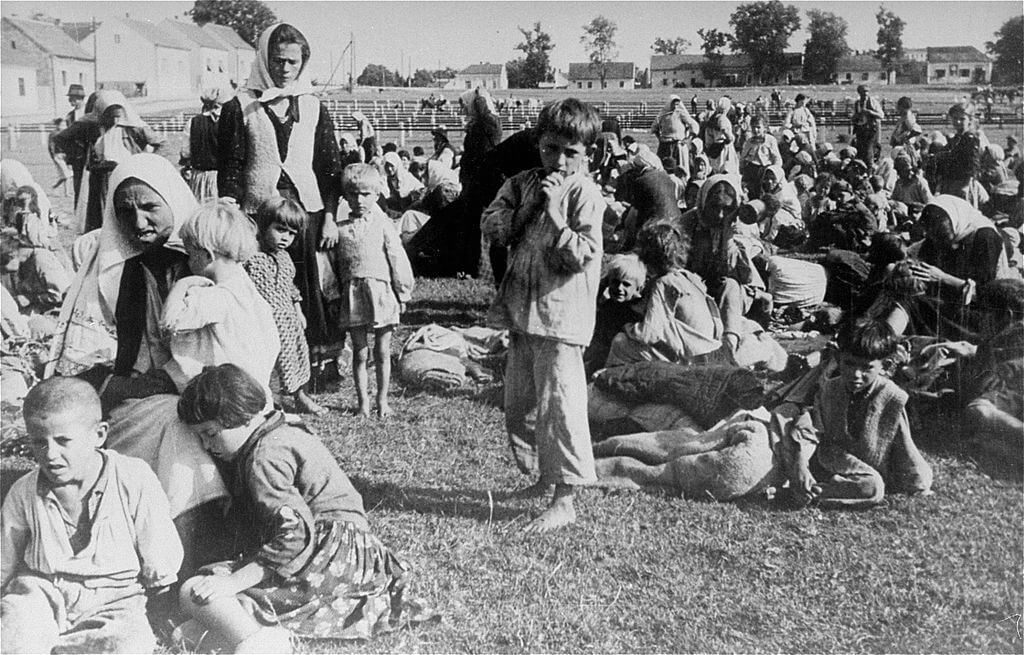The term “Kozara Offensive” or “Battle of Kozara” refers to the assault launched by the combined forces of the German Reich and the Independent State of Croatia against the Yugoslav Partisans on the Kozara Mountain in the summer of 1942. The event is remembered for its strategic importance during the tumultuous period of World War II.
Prelude to the Battle of Kozara
The planning and coordination for the Kozara Offensive started with a conference held in Opatija on March 2 and 3, 1942. Representatives from Italy, Germany, and the Independent State of Croatia, including high-ranking officers like General Vittorio Ambrosio and General Vladimir Laxa, attended the meeting. The focus of the conference was the complete elimination of insurgents within the territory of the Independent State of Croatia.
During the conference, it was determined that there were two insurgency hotspots in the Independent State of Croatia, one in the east between the rivers Bosna and Drina, and the other between Banja Luka and Petrova Gora. The decision was made to jointly address the uprising in the region, with the offensive planned to begin by April 15, 1942. Initially, the offensive was intended to target eastern Bosnia and gradually shift northwest.
Additionally, discussions took place regarding the treatment of prisoners and civilians. It was decided that insurgents and their supporters would be executed, and areas connected to the uprising would be burned down. Consequently, the offensive, codenamed “Trio,” started in early April 1942, with the aim of suppressing the uprising in eastern Bosnia.
During this time, the insurgents on Kozara felt stronger than ever and were ready for larger-scale undertakings. Part of the forces of the 1st and 2nd battalions of the Second Krajina NOP detachment carried out an attack on Bosanska Dubica on April 22. Despite the underwhelming results of the attack on Bosanska Dubica, the Partisans gained valuable experience in urban warfare, which later proved beneficial in the liberation of Prijedor. The liberation of Prijedor and the Ljubija mine had long-term consequences for the population of Potkozarje, as the mine held significance for the German industry, leading the Germans to seek its reactivation.

The First Krajina National Liberation Brigade was formed in Lamovita, beneath Kozara, on May 21, 1942. It was composed of fighters from the wider Bosnian Krajina region. The photo depicts a part of the brigade on the day of its formation, lined up in front of the elementary school.
The German response to the liberation of Prijedor and the Ljubija mine did not take long. A new operational combat group called “Western Bosnia” was formed with the task of suppressing the Partisans in the Kozara region. Kozara became the primary objective of this operation, with a particular emphasis on securing the mine and transportation routes for exporting the ore to Germany.
The Battle of Kozara
Operation “Western Bosnia,” also known as “Xaver,” had multiple stages. In the initial phase, which lasted until June 24, approximately 436 officers and 17,481 non-commissioned officers and soldiers were involved. On June 24, the “Western Bosnia” combat group was reinforced by the “Borovsky” combat group, led by General Heinrich Borovsky, consisting of 4,115 soldiers. Throughout July, additional smaller units were added, totaling around 11,000 German troops and approximately 19,000 soldiers from the Independent State of Croatia.
The Partisan forces in the operation area consisted of approximately 6,000 to 7,000 fighters. The main target of the operation was the Second Krajina Detachment, which was initially isolated and surrounded. The operation commenced on June 10 at 4:30 a.m., with German combat groups “Vedel” and “Gejzo” advancing towards Prijedor from different directions. Their objective was to quickly seize Prijedor and Ljubija, isolating the Second Krajina Detachment from the First Krajina Detachment.
The surprise breakthrough of the German units into Prijedor caught the Second Krajina Detachment off guard. The Second Krajina Detachment headquarters initially underestimated the scale and objectives of the German offensive. They expected a similar outcome to previous offensives, capturing Prijedor and securing traffic routes. The significance of the Ljubija mine and the German intention to control it were underestimated as well.
By establishing control over key roads and surrounding Kozara, the German-Croatian forces effectively laid siege to the Second Krajina Detachment. The next stage involved tightening the encirclement and breaking out onto the Bosanska Dubica – Prijedor road. The 1st Mountain Division of the NDH was tasked with this mission and engaged in fierce battles with parts of the Second Krajina Detachment’s 1st Battalion.
As of June 18, the combined German-Croatian forces reached the Bosanska Dubica – Prijedor road, significantly limiting the maneuverability of the Kozara partisans. Although some breakouts occurred, the leadership of the Second Krajina Detachment did not fully grasp the severity of the situation and did not consider abandoning Kozara.
An encirclement of around 80,000 people was formed in Kozara, leading to a mass evacuation organized by municipalities and districts. The population brought livestock, food supplies, and set up makeshift shelters. Communal kitchens and medical personnel were established to support the displaced.
By early July, the situation for the partisans and civilians deteriorated rapidly. The number of casualties and wounded increased, supplies dwindled, diseases spread, and the enemy’s offensive remained intense. Breaking out of the encirclement became the only option, and a plan was devised on July 2 to break the encirclement on the night of July 3 to 4.
The breakout attempts resulted in mixed outcomes. The First and Assault battalions managed to break through, accompanied by approximately 10,000 civilians. However, subsequent attempts by the 2nd, 3rd, and 4th Battalions faced greater difficulties due to the presence of fresh enemy units. Only small groups of fighters sporadically broke out, leaving the majority of the Second Krajina Detachment and civilians trapped.
After suffering significant losses in the second breakout attempt, the Second Krajina Detachment ceased organized resistance. The remaining fighters and wounded regrouped in the village of Vojskova, while civilians were ordered to hide within Kozara. The operation on Kozara continued until July 17 when General Stahl declared it a success, claiming the destruction of the Kozara Partisans.
The suffering of the Serb people of Kozara during July and August 1942 was immense. Around 80,000 civilians were present at the start of the offensive, with many men joining the partisan units to defend their families. After the Second Krajina Detachment was disbanded, most men returned to their families who had sought refuge in the forests and caves of Kozara. However, tragically, around 68,500 people from Kozara were taken to concentration camps, where many of them lost their lives.

The “Western Bosnia” combat group operated in the Potkozarje area until the second half of August when it was disbanded. According to available data, the combat group suffered 69 German deaths, 160 wounded, and seven missing, while 445 Croats were killed, 654 wounded, and 498 were reported missing from June 5 to July 31.
Operation “Western Bosnia” had a profound impact on the Second Krajina Detachment and the civilian population. The partisans faced strategic challenges due to the encirclement and relentless enemy attacks. The civilians endured hardships, including a lack of supplies, the spread of diseases, and the constant threat of capture or harm.
Overall, Operation “Western Bosnia” was a significant military campaign during World War II, characterized by fierce fighting, encirclement, and the mass evacuation of civilians. Its outcome resulted in heavy losses on both sides and had a lasting impact on the region.
Historical Challenge: Can You Conquer the Past?
Answer more than 18 questions correctly, and you will win a copy of History Chronicles Magazine Vol 1! Take our interactive history quiz now and put your knowledge to the test!

